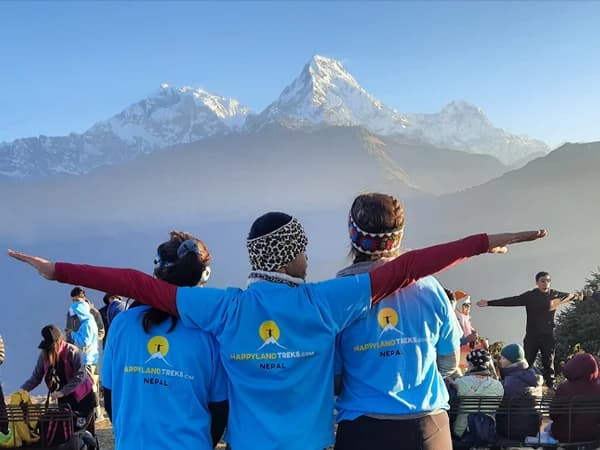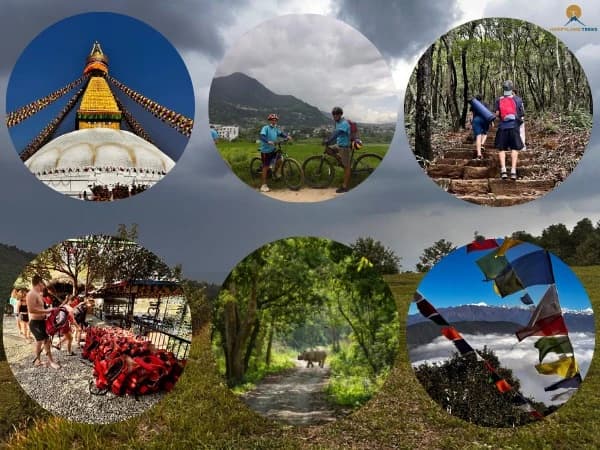Climbing Mount Everest The Adventure of a Lifetime
Climbing Mount Everest is not just a physical challenge, it’s also a mental one because it tough extreme altitude and harsh conditions require a serious preparation. Climbers need to spend time adjusting to the lower levels of oxygen, starting at Everest Base Camp and continuing higher up. The whole journey usually takes between 6 to 9 weeks, with the final push to the summit being the most challenging part.
The adventure begins when climbers reach Everest Base Camp, which sits at 5,364 meters (17,598 feet) so this is our first step point for the entire expedition. At Base Camp, to check and preparing our climbers need spend several days or more getting used to the low-oxygen environment and preparing themselves for the tough journey ahead.
1. Arrival at Everest Base Camp (EBC)
The journey starts with the trek to Everest Base Camp (EBC), which sits at around 17,600 feet (5,380 meters). To get to EBC, climbers fly into Lukla, a small mountain town, and then trek for about 8-10 days. This initial trek is more than just a hike, it’s an important time for acclimatization. As climbers slowly make their way up, their bodies begin adjusting to the lower levels of oxygen, preparing them for the higher elevations they will face.
During this trek, climbers also mentally prepare for the challenges ahead. It's an opportunity to bond with their fellow climbers, set a steady pace, and start getting used to the cold and harsh environment of the mountain. The trek is an important first step before reaching Base Camp, where the serious part of the climb begins.
2. The Series of Camps
Once climbers reach Everest Base Camp, the real ascent begins. The climb is broken down into several stages, with climbers stopping at a series of camps set up at increasing altitudes. Each camp provides a resting place for climbers to adjust to the thinning air before making their way higher. These camps serve as vital points in the journey, giving climbers time to rest, regain energy, and acclimate. Here's a breakdown of the camps:
- Camp 1 (6,065 meters / 19,898 feet):
After Base Camp, climbers move up to Camp 1, where they begin their first big climb through the Khumbu Icefall, a massive glacier with huge blocks of ice and crevasses. The terrain here is especially treacherous, with narrow ridges and steep ascents, often requiring climbers to use metal ladders to scale towering ice formations. This part of the climb is both physically demanding and mentally taxing, as climbers must carefully navigate this hazardous section.
- Camp 2 (6,400 meters / 21,000 feet):
Once climbers reach Camp 2, they can rest and catch their breath, but the work is far from over. Camp 2 sits at a higher elevation, where oxygen levels continue to drop. Climbers are now in high-altitude conditions, and at this point, they often need to use supplementary oxygen to help them breathe. While at Camp 2, climbers prepare for the next phase of the climb, mentally and physically preparing for the steeper sections ahead.
- Camp 3 (7,470 meters / 24,500 feet):
From Camp 2, climbers ascend to Camp 3, which is located on the Lhotse Face, a steep slope covered in ice and rock. The climb to Camp 3 is extremely demanding due to its steepness and the high-altitude climbing involved. The air is much thinner here, and even breathing becomes a challenge. Climbers need to stay focused and manage their energy carefully as they prepare for the final stretch.
- Camp 4 (7,920 meters / 26,000 feet):
The final stop before the summit is Camp 4, located on the South Col. This is the last opportunity climbers have to rest before the final summit push. It’s a critical time for climbers to gather their strength and check their gear, as the last stage of the climb is the most difficult and dangerous. Camp 4 is also the point at which climbers typically use supplementary oxygen to ensure they can make it to the top. From here, climbers will make their way to the summit of Mount Everest, which is still several hours away, but at this point, they are closer than ever.
Climbing Mount Everest requires immense physical endurance, mental fortitude, and the ability to adapt to the challenges posed by the mountain. With 66 days of preparation, climbing, resting, and acclimatizing, it’s a journey that tests every part of a climber’s being. From Base Camp to Camp 4, each stage provides climbers with opportunities to adjust, rest, and gain strength for the ultimate goal: standing on the summit of the world’s tallest mountain.
Acclimatization and Camp Setup
After arriving at Everest Base Camp, climbers begin the initial acclimatization process. This typically takes around 10-14 days. Climbers ascend to Camp 1 (6,065 meters or 19,900 feet) before returning to Base Camp to rest and continue adjusting to the low-oxygen environments. The series of camps you’ll ascend includes Camp 2 (6,400 meters or 21,000 feet), Camp 3 (7,200 meters or 23,600 feet), and Camp 4 (7,900 meters or 26,000 feet), each of which serves as a higher stepping stone towards the summit push.
Each camp poses a unique challenge, from the treacherous terrain to the extreme weather conditions. As you ascend, the levels of oxygen decrease, making the air thinner and harder to breathe. At these elevations, the use of supplemental oxygen becomes necessary to ensure a safe ascent. The atmospheric pressure is significantly lower, further complicating the climb.
The Final Push: Summit Day
The final stretch towards the summit pyramid is arguably the most difficult. Climbers typically make their summit attempts in a single, grueling day, known as summit day. From Camp 4, the ascent to the summit of Mt. Everest can take between 8 to 12 hours, depending on the climber’s speed and weather conditions.
Climbers face extreme conditions on their way to the summit ridge, where they must contend with high-altitude climbing challenges such as heavy snowfall and bad weather. The narrow summit ridge offers little room for error, and summit prayer flags are often placed here as a symbol of respect. The summit coach or summit pyramid marks the peak, and reaching it is a monumental achievement that climbers remember forever.
The Role of Experienced Guides
Experienced guides are essential in ensuring a successful ascent. Many guide companies offer specialized services for high-altitude expeditions, providing climbing aid, route-finding, and mountain staff who are trained to handle the extreme environment of the mountain. Guides like those from Alpenglow Expeditions and Peter Habeler's team know how to navigate the extreme weather conditions and deal with the threat to climbers posed by jet streams and unstable atmospheric conditions.
Timing and Weather Conditions
Timing your expedition is crucial. The best time to climb Mount Everest is during the pre-monsoon period, from late April to early June. During this period, weather conditions are more stable, and temperatures are milder, which reduces the risk of altitude sickness and other risks. The climbing season also provides ample time for acclimatization and strategic planning for summit attempts.
However, monsoon season (from June to September) and winter (from December to February) are considered the worst times to climb, as heavy snowfall, cold temperatures, and high winds can make conditions deadly. Climbers who attempt the summit during these periods face high risks and limited daylight hours, further shortening their time to ascend.
The Physical and Mental Challenge
To Climb Mount Everest, it’s not just about physical strength—it’s also about mental fortitude. The journey requires climbers to maintain focus under high-altitude conditions, even when facing exhaustion, lack of oxygen, and the knowledge that the summit push is just ahead. Climbers must rely on their training, climbing skills, and the support of fellow climbers and their guide companies.
Altitude sickness is a constant threat, so it’s essential to listen to your body, keep track of your oxygen levels, and adjust your pace as needed. Each summit attempt is different, and climbers must be prepared for the possibility that they may not reach the top during their first try. There is no guarantee of success, but the journey is a monumental accomplishment in itself.
Conclusion
Climbing Mount Everest is not just about reaching the top. It’s about the experience, the teamwork, and the triumph of overcoming harsh conditions and extreme weather conditions. It takes weeks of preparation, a strong physical condition, and the help of experienced guides to handle the extreme environment.
So, how long does it take to climb Mount Everest? On average, the expedition time is around 6 to 9 weeks, including acclimatization and summit attempts. Whether it’s your first attempt or you’ve already tried before, reaching the summit of Mt. Everest is an achievement unlike any other. It’s the ultimate test of human endurance and will remain one of the greatest feats you’ll ever accomplish.



